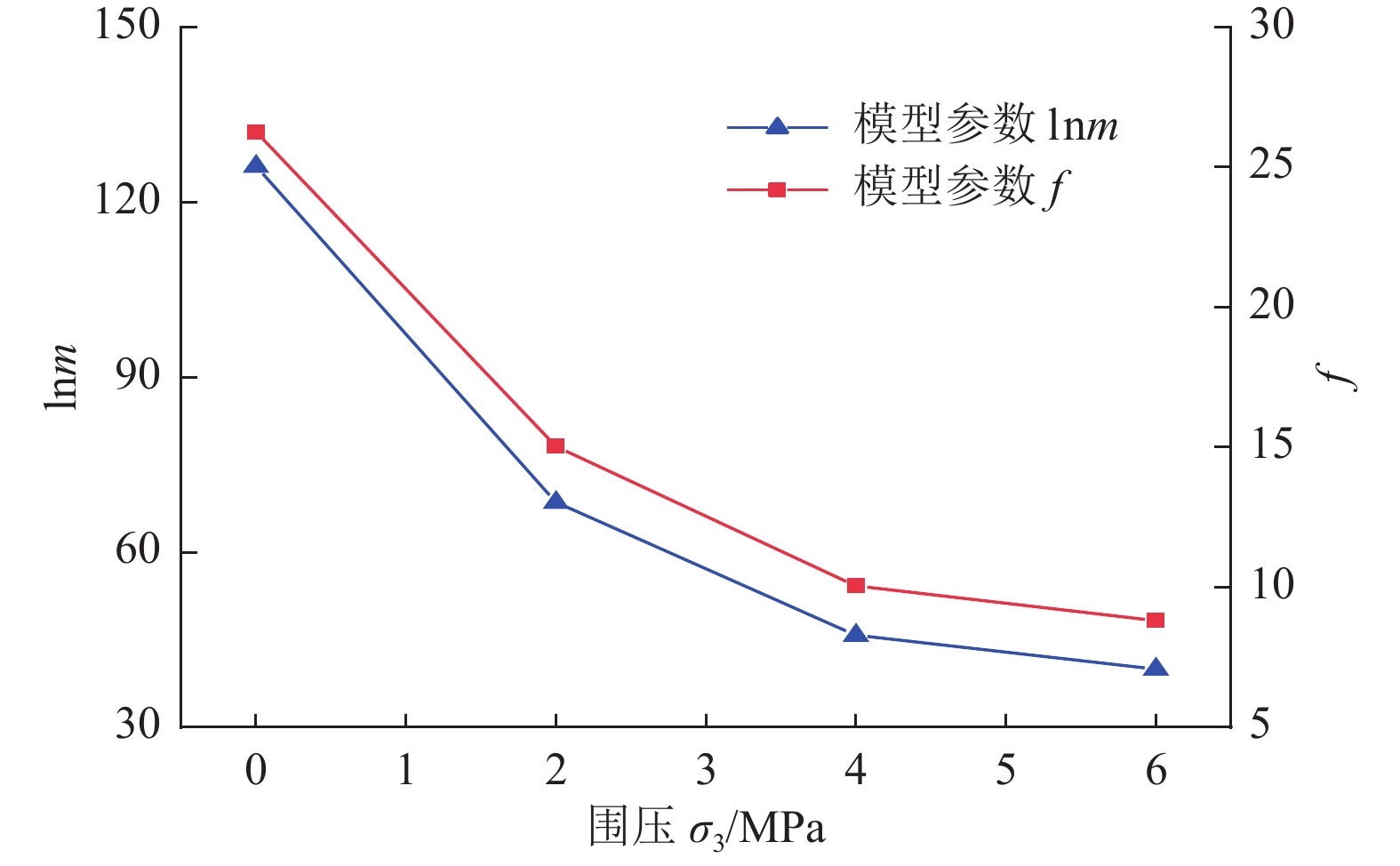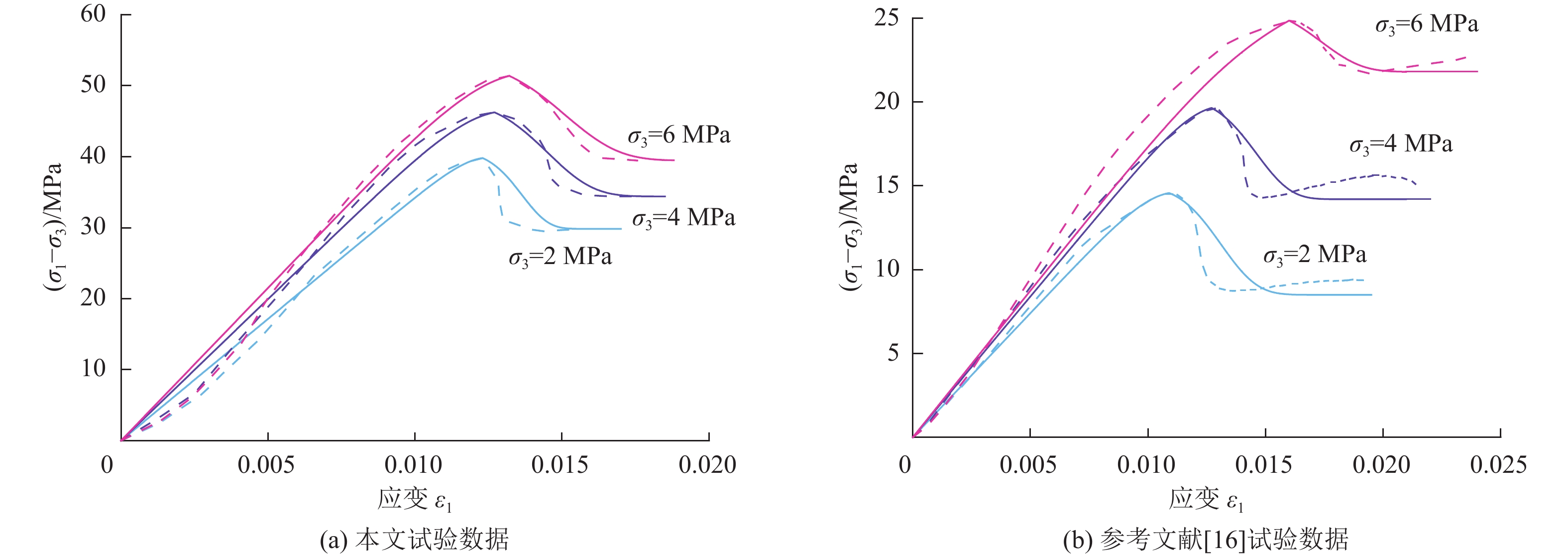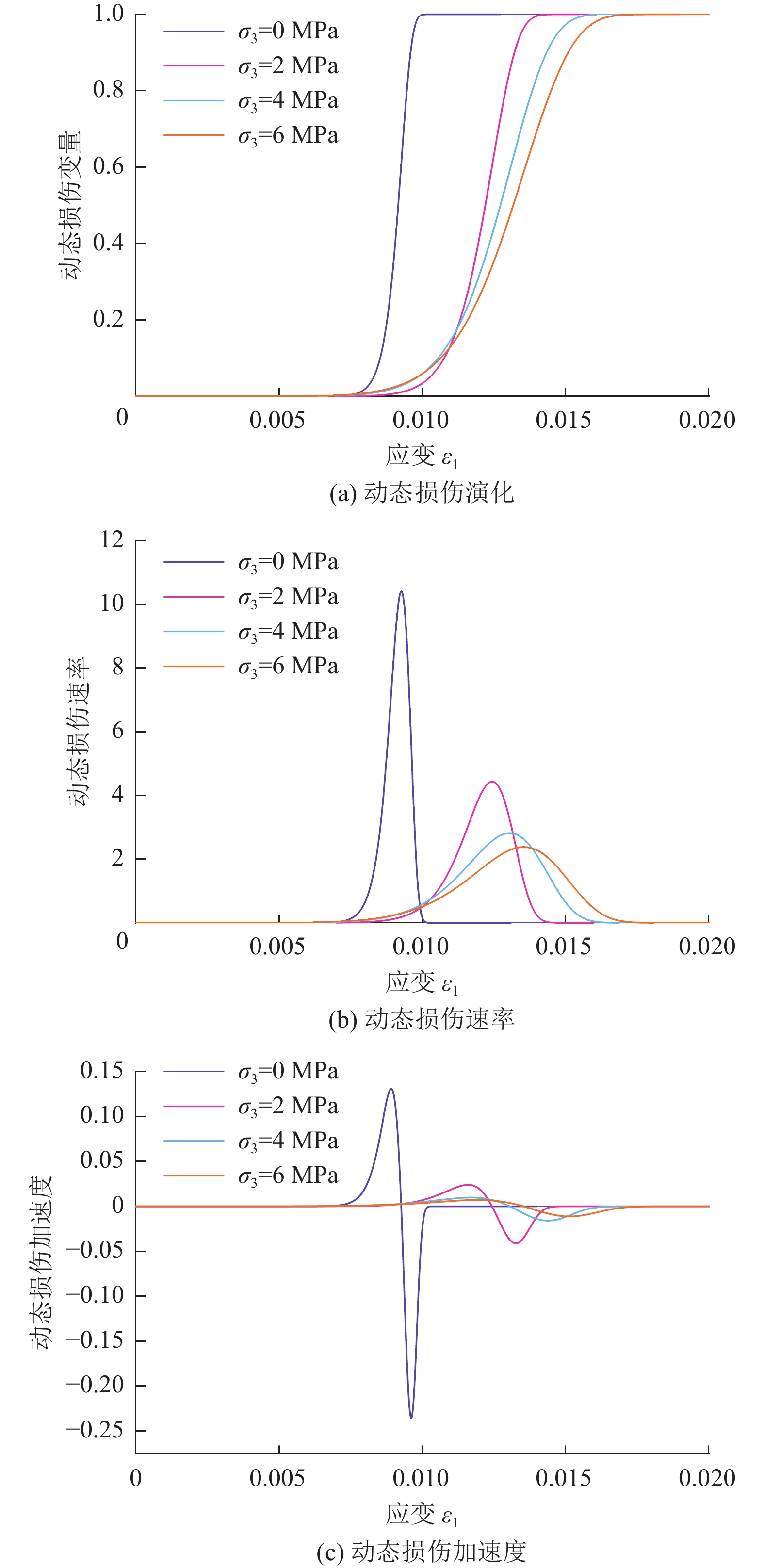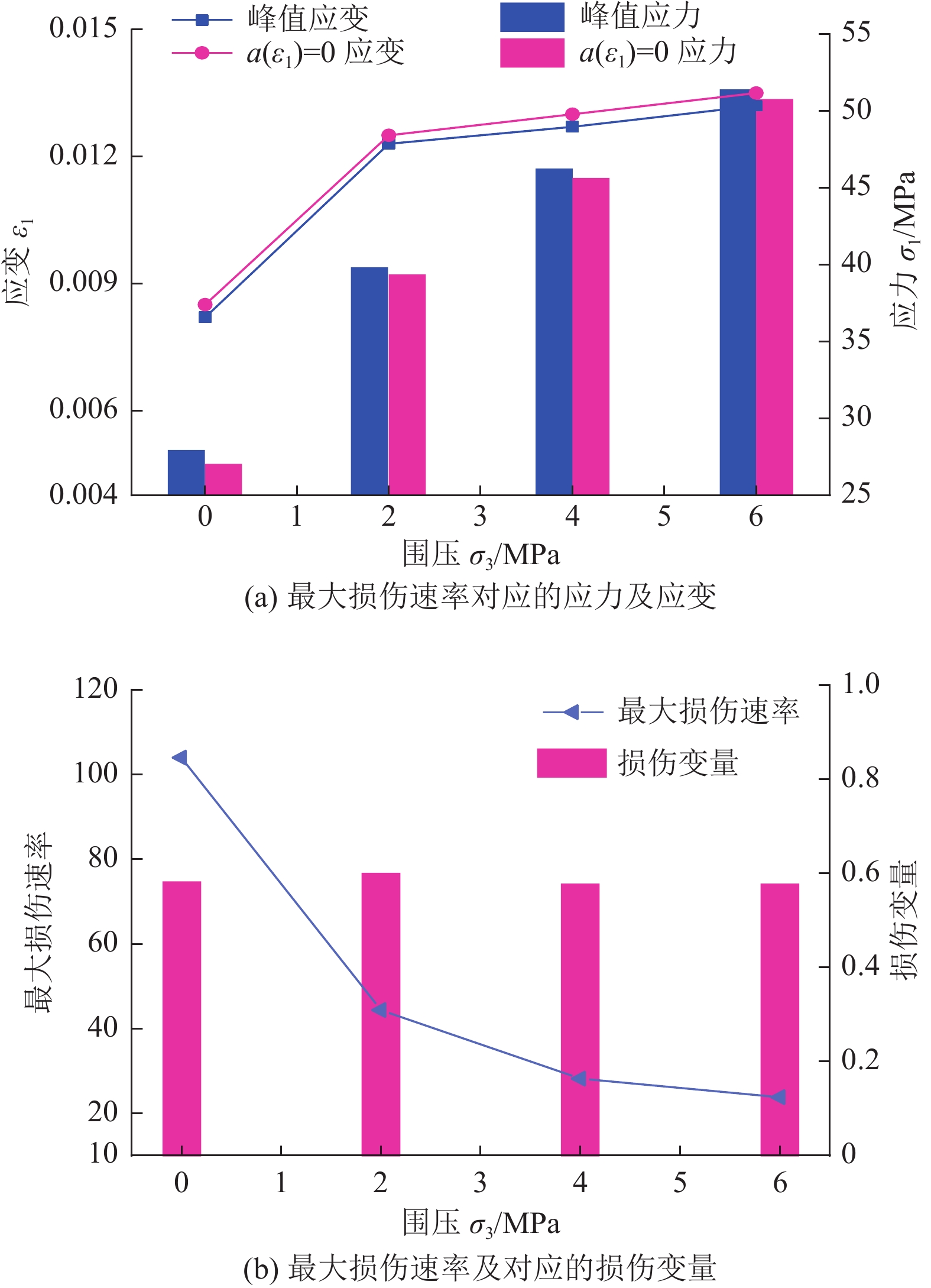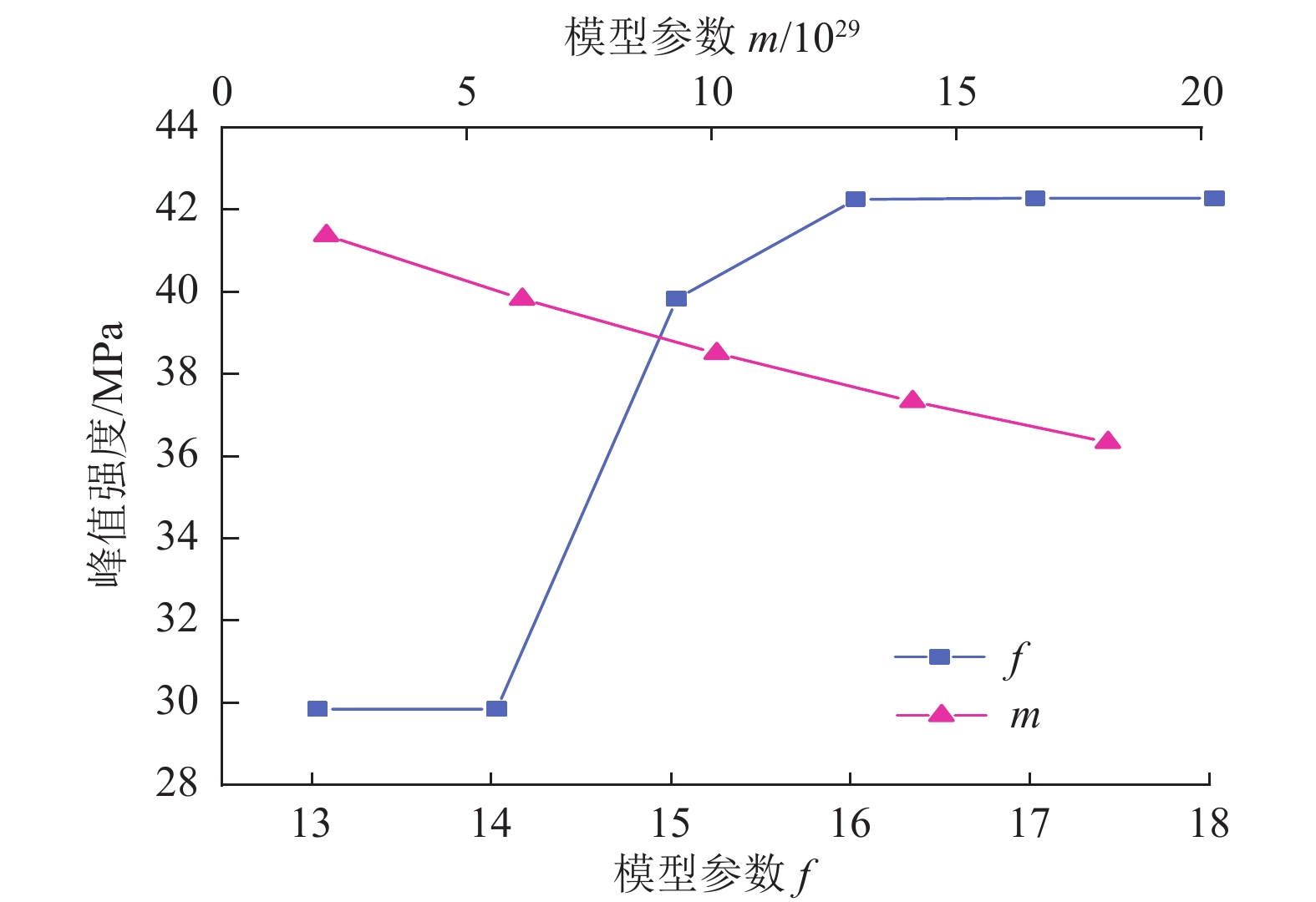-
摘要:目的
本构模型是描述岩体变形破坏特性、表征其力学行为最有效的方法,针对岩石受荷过程中损伤速率变化建立动态损伤演化方程及本构模型成为岩体力学重要内容。
方法为进一步深入研究荷载作用下岩石变形破坏全过程,将受荷岩石抽象为损伤和未损伤2部分,且未损伤部分承担有效应力,损伤部分承担残余应力,基于动态损伤速率的演化特征,建立动态损伤演化方程及本构模型,通过红砂岩常规三轴压缩试验结果验证模型的合理性。
结果和结论结果表明:模型理论曲线可较好地反映岩石受荷损伤破坏的力学行为,其动态损伤演化依次经过损伤不变、损伤加快扩展、损伤缓慢增加和完全损伤4个阶段,分别对应理论曲线的压密−弹性变形、塑性变形、峰后软化和残余变形阶段;随着围压的增加,岩石动态损伤累积速率减缓,说明围压可抑制损伤扩展,表现为岩石抗压强度的增加和塑性特性的渐次增强;最大损伤速率较为接近峰值点,并在其右侧应力下降阶段,且对应的损伤变量在不同围压下基本一致;模型参数f增加,岩石强度及塑性变形增加;模型参数m减小,岩石强度增加,但对岩石损伤变形影响较小。通过建立的演化方程及本构模型,探讨了最大损伤速率点的特征及模型参数对岩石强度和损伤变形的影响,对岩石力学的发展有重要的参考价值。
Abstract:ObjectiveA constitutive model is identified as the most effective method for describing the deformations and failure characteristics of rocks and characterizing their mechanical behavior. Developing the equation and constitutive model for the dynamic damage evolution of rocks based on changes in their damage rates under loading is an important part of rock mechanics.
MethodsTo further investigate the whole process of rock deformations and failure under loading, rocks were divided into the damaged and undamaged parts via abstraction, with the latter bearing effective stress and the former bearing residual stress. This study established the equation and constitutive model based on the evolutionary characteristics of the dynamic damage rate and verified the rationality of the model using conventional triaxial compression experiments on red sandstones. [Results and Conclusions] The results indicate that the theoretical curve derived from the model can effectively reflect the mechanical behavior of rock damage and failure under loading. The dynamic damage of rocks underwent four stages: unchanged damage, accelerated damage propagation, slowly increasing damage, and complete damage, which correspond to the compression and elastic deformation, plastic deformation, post-peak softening, and residual deformation stages of the theoretical curve, respectively. According to the curve, the cumulative dynamic damage rate of rocks slowed down with an increase in the confining pressure. This indicates that confining pressure can inhibit damage propagation, as manifested by an increase in the compressive strength of rocks and a gradual enhancement of their plastic properties. The maximum damage rate was present in the stress decrease stage to the right of the curve’s peak, approaching the peak. Furthermore, the damage variable corresponding to the maximum damage rate was roughly consistent under different confining pressures. An increase in model parameter f was associated with an increase in the strength and plastic deformation of rocks. In contrast, a decrease in model parameter m corresponded to an increase in the rock strength but had minor impacts on the damage and deformation of rocks. By establishing the equation and constitutive model for the dynamic damage evolution of rocks, this study explores the characteristics of the maximum damage rate and the impacts of the model parameters on rock strength and the damage and deformation of rocks, serving as a valuable reference for the development of rock mechanics.
-
-
表 1 不同围压作用下红砂岩破坏模式
Table 1 Failure modes of red sandstones under different confining pressures
标准岩样 不同围压下破坏模式 0 MPa 2 MPa 4 MPa 6 MPa 




-
[1] 袁超,张慧梅,孟祥振,等. 内摩擦角对冻融岩石损伤本构模型的影响探讨[J]. 煤田地质与勘探,2019,47(4):138−143. DOI: 10.3969/j.issn.1001-1986.2019.04.021 YUAN Chao,ZHANG Huimei,MENG Xiangzhen,et al. Influence of internal friction angle on damage constitutive model of freeze-thaw rock[J]. Coal Geology & Exploration,2019,47(4):138−143. DOI: 10.3969/j.issn.1001-1986.2019.04.021
[2] 曹文贵,方祖烈,唐学军. 岩石损伤软化统计本构模型之研究[J]. 岩石力学与工程学报,1998,17(6):628−633. DOI: 10.3321/j.issn:1000-6915.1998.06.004 CAO Wengui,FANG Zulie,TANG Xuejun. A study of statistical constitutive model for soft and damage rocks[J]. Chinese Journal of Rock Mechanics and Engineering,1998,17(6):628−633. DOI: 10.3321/j.issn:1000-6915.1998.06.004
[3] CHEN Xin,LIAO Zhihong,PENG Xi. Deformability characteristics of jointed rock masses under uniaxial compression[J]. International Journal of Mining Science and Technology,2012,22(2):213−221. DOI: 10.1016/j.ijmst.2011.08.012
[4] LI Hangzhou,LIAO Hongjian,XIONG Guangdong,et al. A three-dimensional statistical damage constitutive model for geomaterials[J]. Journal of Mechanical Science and Technology,2015,29(1):71−77. DOI: 10.1007/s12206-014-1211-2
[5] 黄海峰,巨能攀,蓝康文,等. 岩石统计损伤软化模型及其参数反演[J]. 长江科学院院报,2018,35(6):102−106. HUANG Haifeng,JU Nengpan,LAN Kangwen,et al. Statistical damage softening model for rock and back analysis of its parameters[J]. Journal of Yangtze River Scientific Research Institute,2018,35(6):102−106.
[6] 吴贤振,刘建伟,刘祥鑫,等. 岩石声发射振铃累计计数与损伤本构模型的耦合关系探究[J]. 采矿与安全工程学报,2015,32(1):28−34. WU Xianzhen,LIU Jianwei,LIU Xiangxin,et al. Study on the coupled relationship between AE accumulative ring-down count and damage constitutive model of rock[J]. Journal of Mining & Safety Engineering,2015,32(1):28−34.
[7] 温韬,唐辉明,刘佑荣,等. 影响因子修正的新型岩石损伤统计本构模型[J]. 中国矿业大学学报,2016,45(1):141−149. WEN Tao,TANG Huiming,LIU Yourong,et al. Newly modified damage statistical constitutive model of rock based on impact factor[J]. Journal of China University of Mining & Technology,2016,45(1):141−149.
[8] 蒋维,邓建,李隐. 基于对数正态分布的岩石损伤本构模型研究[J]. 地下空间与工程学报,2010,6(6):1190−1194. DOI: 10.3969/j.issn.1673-0836.2010.06.015 JIANG Wei,DENG Jian,LI Yin. Study on constitutive model of rock damage based on lognormal distribution[J]. Chinese Journal of Underground Space and Engineering,2010,6(6):1190−1194. DOI: 10.3969/j.issn.1673-0836.2010.06.015
[9] LI Shuchun,XU Jiang,TAO Yunqi,et al. Study on damage constitutive model of rocks based on lognormal distribution[J]. Journal of Coal Science and Engineering,2007,13(4):430−433.
[10] 岳洋. 基于不同分布的岩石损伤本构模型的比较[J]. 山西建筑,2010,36(24):137−138. DOI: 10.3969/j.issn.1009-6825.2010.24.086 YUE Yang. Comparison of damage constructive model of rock mass based on different distribution[J]. Shanxi Architecture,2010,36(24):137−138. DOI: 10.3969/j.issn.1009-6825.2010.24.086
[11] 赵红鹤,高富强,杨小林. 基于不同分布的分段式岩石损伤本构模型[J]. 矿业研究与开发,2015,35(4):64−67. ZHAO Honghe,GAO Fuqiang,YANG Xiaolin. Study on segmentary damage constitutive model based on different distribution[J]. Mining Research and Development,2015,35(4):64−67.
[12] LI Yuwei,JIA Dan,RUI Zhenhua,et al. Evaluation method of rock brittleness based on statistical constitutive relations for rock damage[J]. Journal of Petroleum Science and Engineering,2017,153:123−132. DOI: 10.1016/j.petrol.2017.03.041
[13] 秦跃平,张金峰,王林. 岩石损伤力学理论模型初探[J]. 岩石力学与工程学报,2003,22(4):646−650. DOI: 10.3321/j.issn:1000-6915.2003.04.028 QIN Yueping,ZHANG Jinfeng,WANG Lin. Preliminary discussion on theoretical model of rock damage mechanics[J]. Chinese Journal of Rock Mechanics and Engineering,2003,22(4):646−650. DOI: 10.3321/j.issn:1000-6915.2003.04.028
[14] 刘冬桥,郭允朋,李杰宇,等. 基于声发射的脆性岩石单轴压缩损伤演化与本构模型[J]. 中国矿业大学学报,2023,52(4):687−700. LIU Dongqiao,GUO Yunpeng,LI Jieyu,et al. Damage evolution and constitutive model of brittle rock under uniaxial compression based on acoustic emission[J]. Journal of China University of Mining & Technology,2023,52(4):687−700.
[15] 潘继良,郭奇峰,田莉梅,等. 基于统一强度理论的岩石统计损伤软化本构模型及其参数研究[J]. 矿业研究与开发,2019,39(8):38−42. PAN Jiliang,GUO Qifeng,TIAN Limei,et al. Study on rock statistical damage softening constitutive model and its parameters based on the unified strength theory[J]. Mining Research and Development,2019,39(8):38−42.
[16] 张慧梅,雷利娜,杨更社. 等围压条件下岩石本构模型及损伤特性[J]. 中国矿业大学学报,2015,44(1):59−63. ZHANG Huimei,LEI Lina,YANG Gengshe. Characteristic and representative model of rock damage process under constant confining stress[J]. Journal of China University of Mining & Technology,2015,44(1):59−63.
[17] 童立红,伍冰妮,吴琳琳,等. 砂岩应变相关变形损伤本构理论及试验研究[J]. 长江科学院院报,2023,40(8):105−111. DOI: 10.11988/ckyyb.20220207 TONG Lihong,WU Bingni,WU Linlin,et al. Constitutive theory and experimental study on strain-dependent deformation damage of sandstone[J]. Journal of Changjiang River Scientific Research Institute,2023,40(8):105−111. DOI: 10.11988/ckyyb.20220207
[18] LIN Yun,GAO Feng,ZHOU Keping,et al. Mechanical properties and statistical damage constitutive model of rock under a coupled chemical-mechanical condition[J]. Geofluids,2019,2019:7349584.
[19] 房智恒. 基于Mohr-Coulomb准则的岩石损伤本构模型研究[J]. 矿业工程研究,2017,32(1):7−13. FANG Zhiheng. Rock damage constitutive model based on Mohr-Coulomb criterion[J]. Mineral Engineering Research,2017,32(1):7−13.
[20] 石崇,蒋新兴,朱珍德,等. 基于Hoek-Brown准则的岩石损伤本构模型研究及其参数探讨[J]. 岩石力学与工程学报,2011,30(增刊1):2647−2652. SHI Chong,JIANG Xinxing,ZHU Zhende,et al. Study of rock damage constitutive model and discussion of its parameters based on Hoek-Brown criterio[J]. Chinese Journal of Rock Mechanics and Engineering,2011,30(Sup.1):2647−2652.
[21] 冯清波,王明帅,江信东,等. 基于SMP准则的岩石统计损伤本构模型[J]. 黑龙江科技大学学报,2021,31(1):38−42. DOI: 10.3969/j.issn.2095-7262.2021.01.007 FENG Qingbo,WANG Mingshuai,JIANG Xindong,et al. Statistical damage constitutive model for rock based on SMP criterion[J]. Journal of Heilongjiang University of Science and Technology,2021,31(1):38−42. DOI: 10.3969/j.issn.2095-7262.2021.01.007
[22] 简兵希,陶铁军,贾健,等. 基于Lade-Duncan强度准则的软岩损伤本构模型研究[J]. 应用力学学报,2023,40(6):1384−1392. JIAN Bingxi,TAO Tiejun,JIA Jian,et al. Study on damage constitutive model of soft rock based on Lade-Duncan strength criterion[J]. Chinese Journal of Applied Mechanics,2023,40(6):1384−1392.
[23] 孙传猛,曹树刚,李勇,等. 含初始损伤的煤统计损伤本构模型研究[J]. 中国矿业大学学报,2016,45(2):244−253. SUN Chuanmeng,CAO Shugang,LI Yong,et al. Study of initial damage considered statistic mesoscopic damage constitutive model of coal[J]. Journal of China University of Mining & Technology,2016,45(2):244−253.
[24] 刘志祥,晏孟洋,张双侠,等. 考虑岩石微缺陷影响的损伤本构模型[J]. 黄金科学技术,2023,31(3):507−515. LIU Zhixiang,YAN Mengyang,ZHANG Shuangxia,et al. Damage constitutive model considering the effect of rock microdefects[J]. Gold Science and Technology,2023,31(3):507−515.
[25] 彭志雄,曾亚武. 基于裂纹扩展作用下的岩石损伤力学模型[J]. 东北大学学报(自然科学版),2022,43(12):1784−1791. DOI: 10.12068/j.issn.1005-3026.2022.12.016 PENG Zhixiong,ZENG Yawu. Microcrack propagation-based damage mechanics model of rock[J]. Journal of Northeastern University (Natural Science),2022,43(12):1784−1791. DOI: 10.12068/j.issn.1005-3026.2022.12.016
[26] MENG Xiangzhen,ZHANG Huimei,YUAN Chao,et al. Damage constitutive prediction model for rock under freeze–thaw cycles based on mesoscopic damage definition[J]. Engineering Fracture Mechanics,2023,293:109685. DOI: 10.1016/j.engfracmech.2023.109685
[27] 李盛南,肖俊,李玉,等. 基于细观裂纹扩展演化的岩石损伤本构模型研究[J]. 岩石力学与工程学报,2023,42(3):640−648. LI Shengnan,XIAO Jun,LI Yu,et al. A new damage constitutive model of rock considering microscopic crack growth[J]. Chinese Journal of Rock Mechanics and Engineering,2023,42(3):640−648.
[28] 杨圣奇,徐卫亚,韦立德,等. 单轴压缩下岩石损伤统计本构模型与试验研究[J]. 河海大学学报(自然科学版),2004,32(2):200−203. YANG Shengqi,XU Weiya,WEI Lide,et al. Statistical constitutive model for rock damage under uniaxial compression and its experimental study[J]. Journal of Hohai University (Natural Sciences),2004,32(2):200−203.
[29] 李树春,许江,李克钢,等. 基于Weibull分布的岩石损伤本构模型研究[J]. 湖南科技大学学报(自然科学版),2007,22(4):65−68. LI Shuchun,XU Jiang,LI Kegang,et al. Study on damages constitutive model of rocks based on Weibull distributing[J]. Journal of Hunan University of Science & Technology (Natural Science Edition),2007,22(4):65−68.
[30] LIU Siqi,ZHENG Yonglai,DENG Shuxin. Study on the constitutive model of rock damage based on intermediate principal stress criterion[J]. Hans Journal of Civil Engineering,2016,5(5):171−180. DOI: 10.12677/HJCE.2016.55023
[31] 曹瑞琅,贺少辉,韦京,等. 基于残余强度修正的岩石损伤软化统计本构模型研究[J]. 岩土力学,2013,34(6):1652−1660. CAO Ruilang,HE Shaohui,WEI Jing,et al. Study of modified statistical damage softening constitutive model for rock considering residual strength[J]. Rock and Soil Mechanics,2013,34(6):1652−1660.
[32] 李海潮,张升. 基于修正Lemaitre应变等价性假设的岩石损伤模型[J]. 岩土力学,2017,38(5):1321−1326. LI Haichao,ZHANG Sheng. A constitutive damage model of rock based on the assumption of modified Lemaitre strain equivalence hypothesis[J]. Rock and Soil Mechanics,2017,38(5):1321−1326.
[33] 周永强,盛谦,冷先伦,等. 考虑残余强度和阈值影响的岩石弹性损伤统计模型[J]. 长江科学院院报,2016,33(3):48−53. ZHOU Yongqiang,SHENG Qian,LENG Xianlun,et al. Statistical constitutive model of elastic damage for rock considering residual strength and threshold[J]. Journal of Yangtze River Scientific Research Institute,2016,33(3):48−53.
[34] 曹文贵,赵衡,李翔,等. 基于残余强度变形阶段特征的岩石变形全过程统计损伤模拟方法[J]. 土木工程学报,2012,45(6):139−145. CAO Wengui,ZHAO Heng,LI Xiang,et al. A statistical damage simulation method for rock full deformation process with consideration of the deformation characteristics of residual strength phase[J]. China Civil Engineering Journal,2012,45(6):139−145.
[35] 季明,孙中光,刘文朋,等. 基于幂函数分布的砂岩损伤本构模型研究[J]. 西安建筑科技大学学报(自然科学版),2023,55(3):324−331. JI Ming,SUN Zhongguang,LIU Wenpeng,et al. Study on sandstone damage constitutive model based on power function distribution[J]. Journal of Xi’an University of Architecture & Technology (Natural Science Edition),2023,55(3):324−331.
[36] 张超,俞缙,白允,等. 基于强度理论的岩石脆延转化统计损伤本构模型[J]. 岩石力学与工程学报,2023,42(2):307−316. ZHANG Chao,YU Jin,BAI Yun,et al. Statistical damage constitutive model of rock brittle-ductile transition based on strength theory[J]. Chinese Journal of Rock Mechanics and Engineering,2023,42(2):307−316.







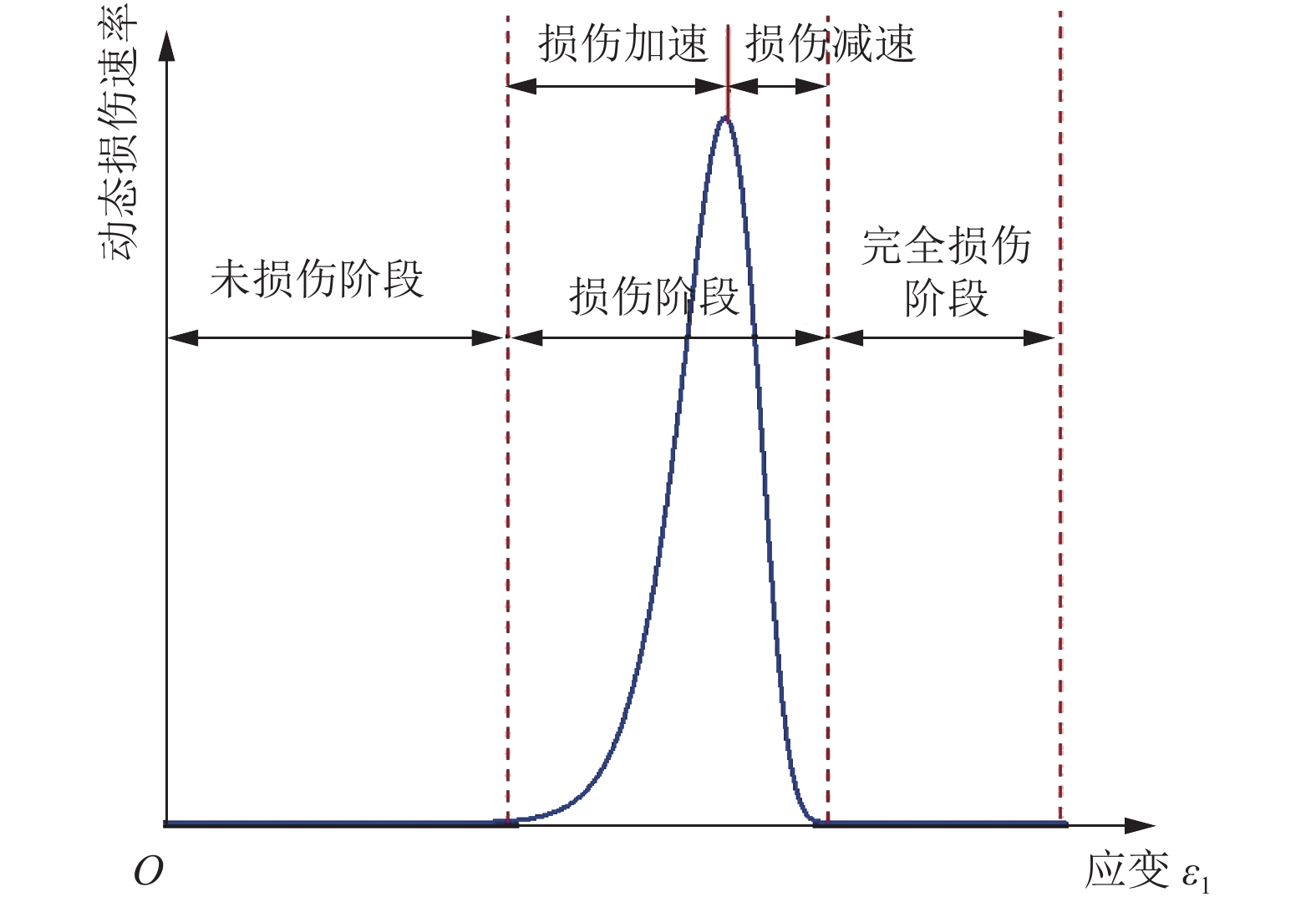
 下载:
下载:

